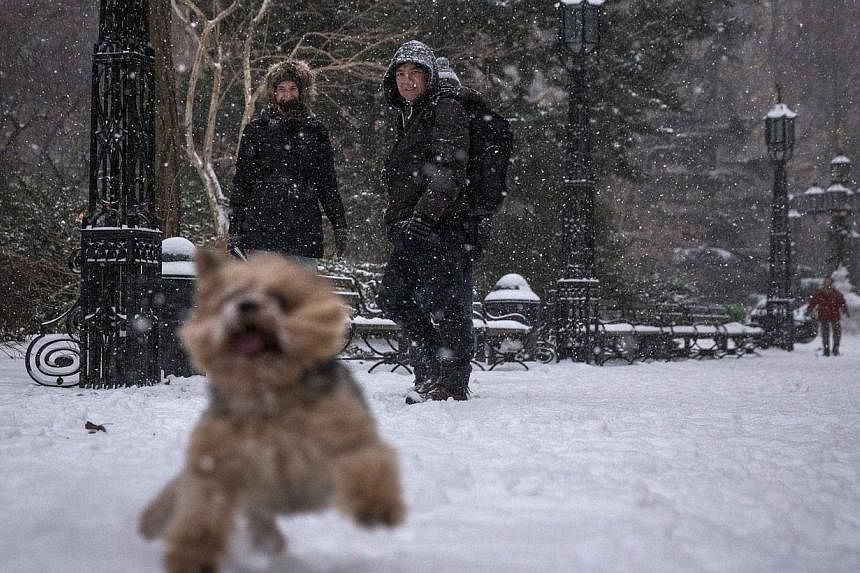A blizzard in the United States is set to break records as forecasts predict high winds and severe snow fall of nearly 1m.
The authorities have advised extreme caution. States of emergency have been declared in New York and New Jersey and a travel ban imposed in Connecticut.
New York Mayor Bill de Blasio said it would "most likely be one of the largest blizzards in the history of New York City".
"You can't underestimate this storm. It's not a typical storm, it's going to pack a real punch," he said.
Here are some interesting facts about blizzards.
1. What makes a snowstorm a blizzard?

Officially, the US National Weather Service defines a blizzard as a storm which contains large amounts of snow (or blowing snow already on the ground), with winds in excess of 35 mph (56kmh) and visibilities of less than 0.25 mile (0.4km) for at least three hours.
Blizzards often develop on the north-west side of an intense storm system. The difference in pressure between two locations results in strong winds which pick up available snow on the ground, or blow any snow which is falling, creating very low visibilities and the potential for significant drifting of snow.
2. The origin of the term
Originally the word was meant to describe a canon shot or a volley of musket fire. It was only in the 1870s that an Iowa newspaper used the word to describe a snowstorm. It caught on and by the 1880s, many people across the United States and in England were using the word "blizzard".
3. What's the danger?

Blizzards can be a matter of life and death. The reduced visibility caused by snow being blown around creates "whiteout" conditions that make it difficult or even impossible to drive.
Strong winds and cold temperatures are another life-threatening danger. Wind chills in the Midwest can drop to as low as minus 51 deg C during blizzard conditions. Exposure can result in frostbite or hypothermia.
Power outages, falling trees and frozen pipes can also occur due to a blizzard.
4. Other historic blizzards
The first blizzard to be declared a Federal Emergency occured in upstate New York and Southern Ohio in 1977. The blizzard had deadly winds of up to 69 mph (111kmh). Thousands were stranded, many of them sleeping in their offices. The US National Weather Service records list 29 deaths related to the 1977 blizzard, including people who died while trying to dig out their cars. Some died in their homes or were found buried in vehicles.
Another legendary storm occured in 1888. The great blizzard saw snowfall of up to 50 inches (1.3m) in parts of New York, New Jersey, Massachusetts and Connecticut. People were confined to their houses for up to a week. More than 400 people died.
5. Survival tips

Once a warning of a storm is given, preparations should be made. Electricity could be lost during the storm, so it is wise to stock up on non-perishable foods, blankets, flashlights, extra batteries and candles.
If you get stuck outdoors, seek shelter immediately, build a snowcave to block winds if you have to and keep moving around to keep your blood flowing. Stay hydrated, but not by eating snow which will lower your body temperature. Melt the snow first before consuming it.
Sources: National Oceanic and Atmospheric Administration (NOAA), Basicplanet.com, The Buffalo News, Livescience.com




